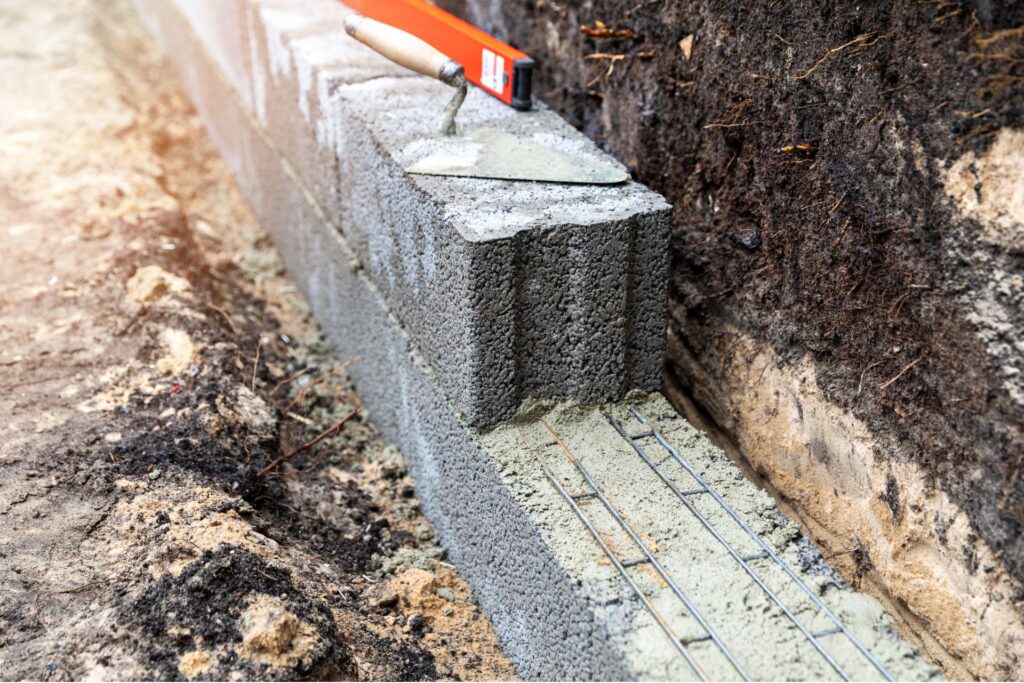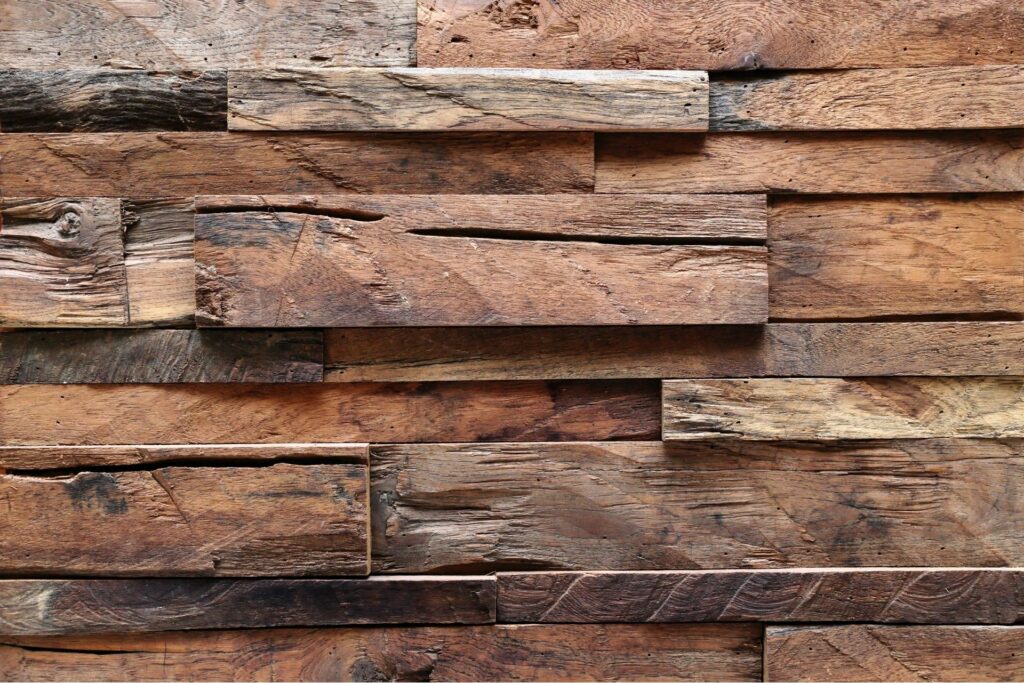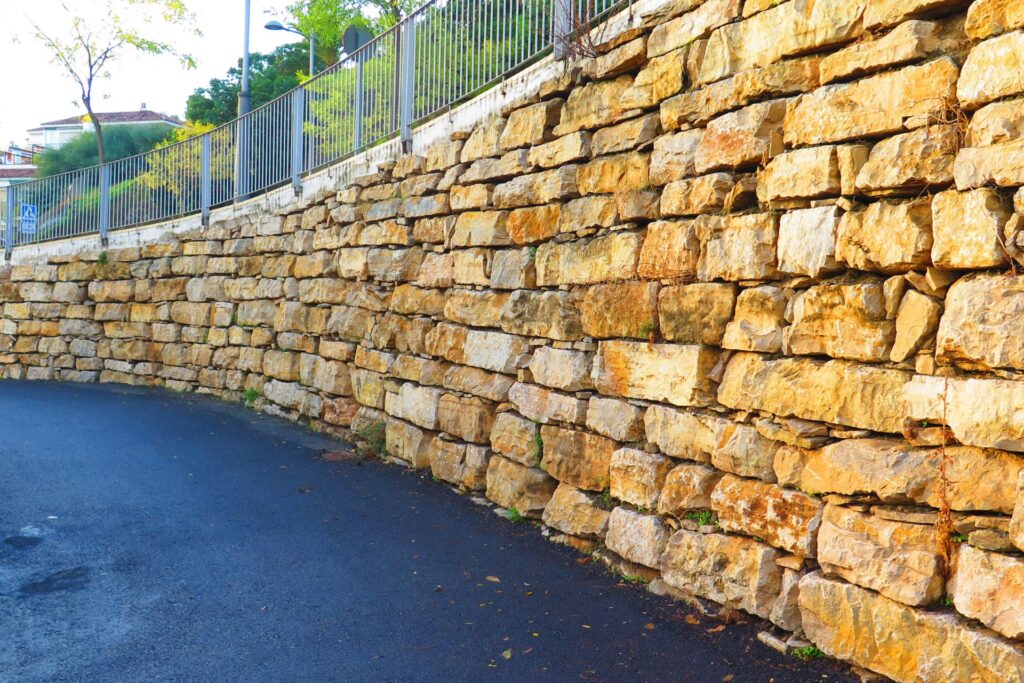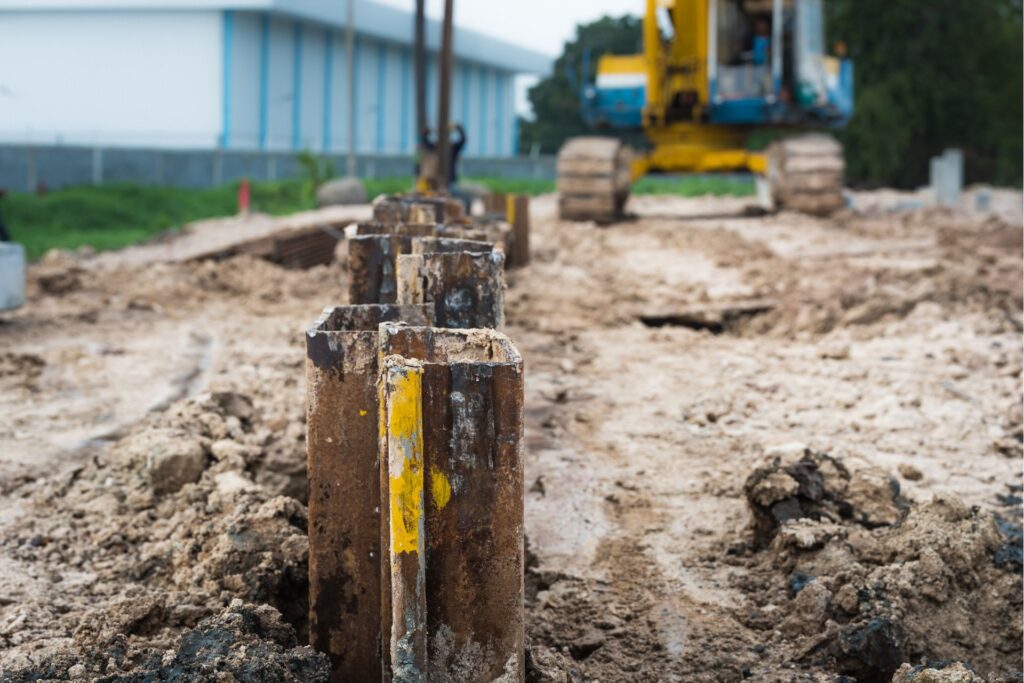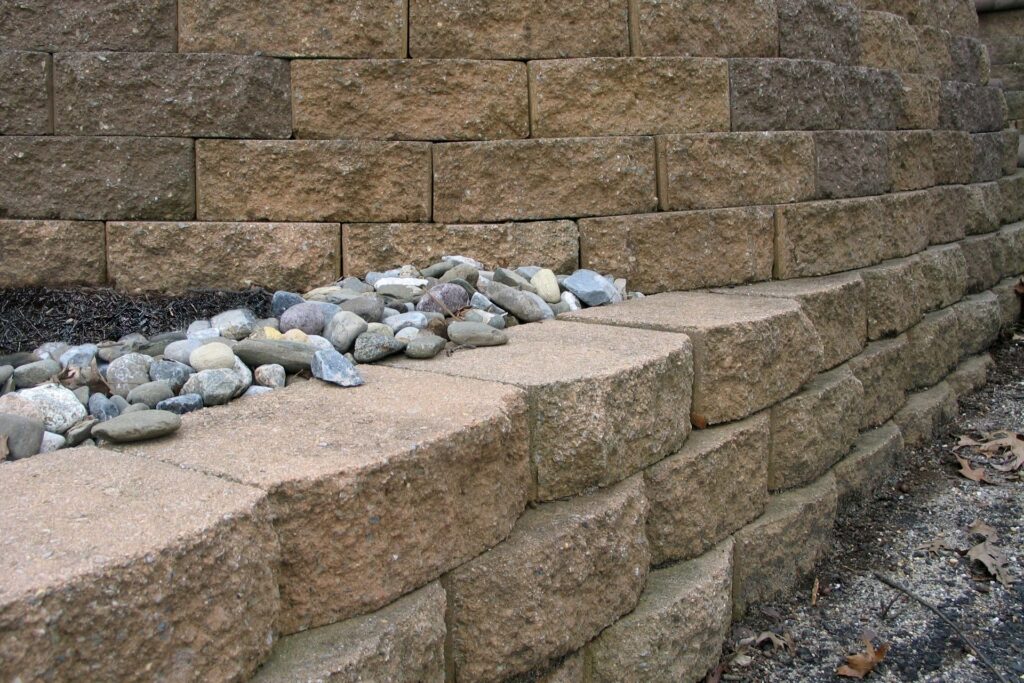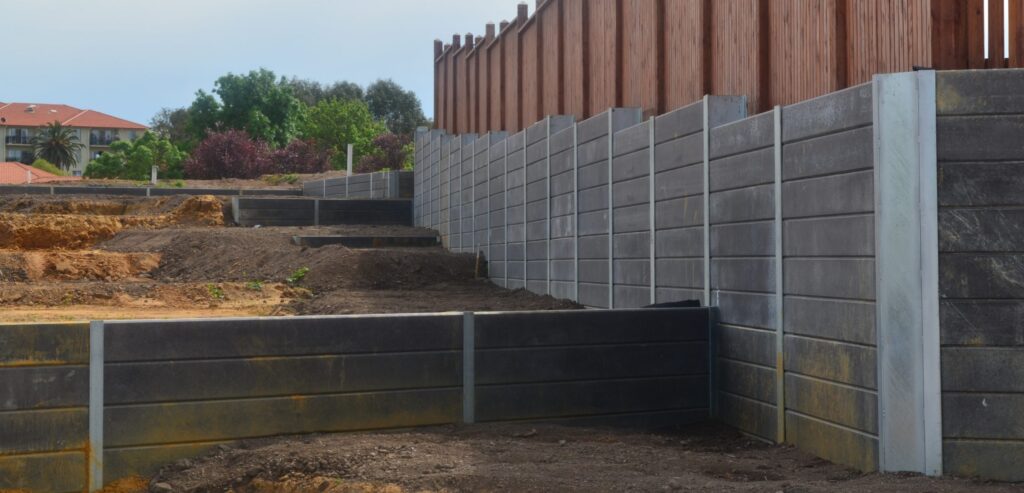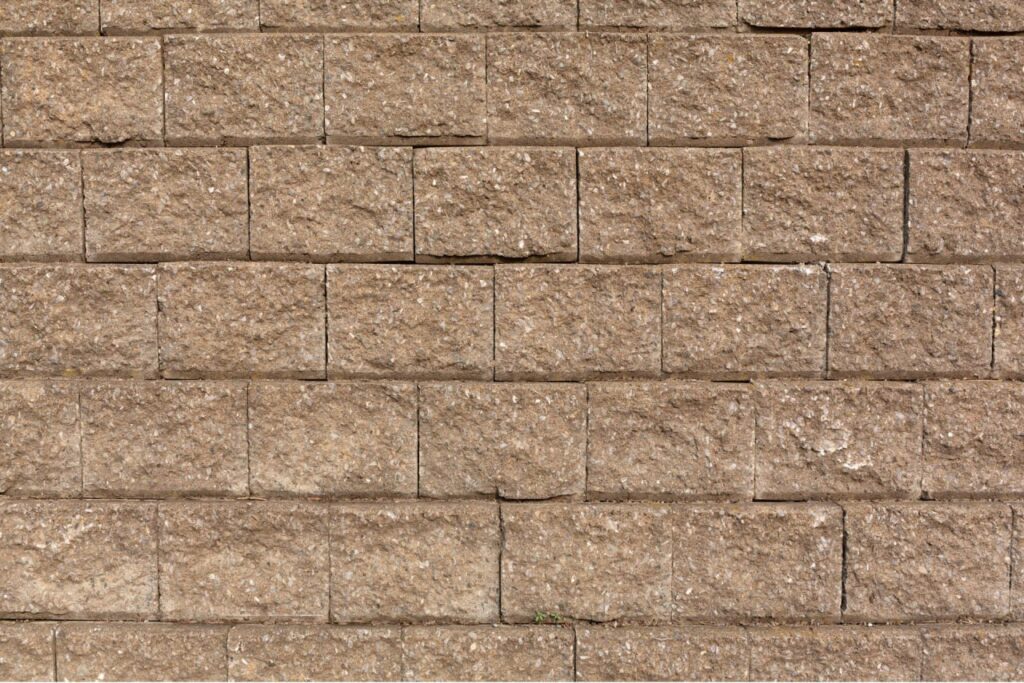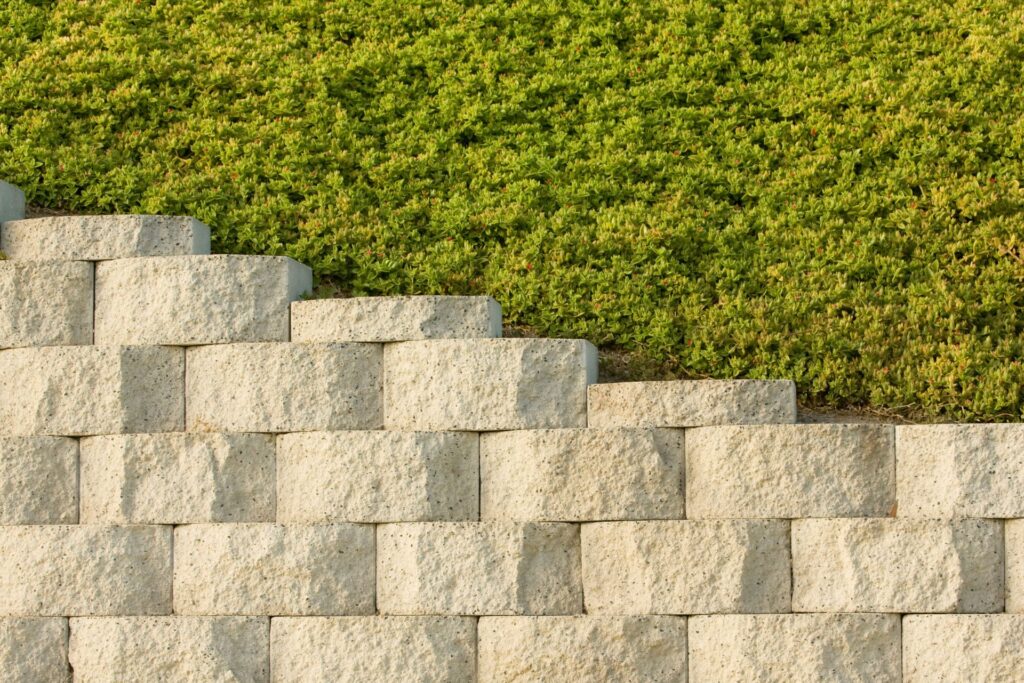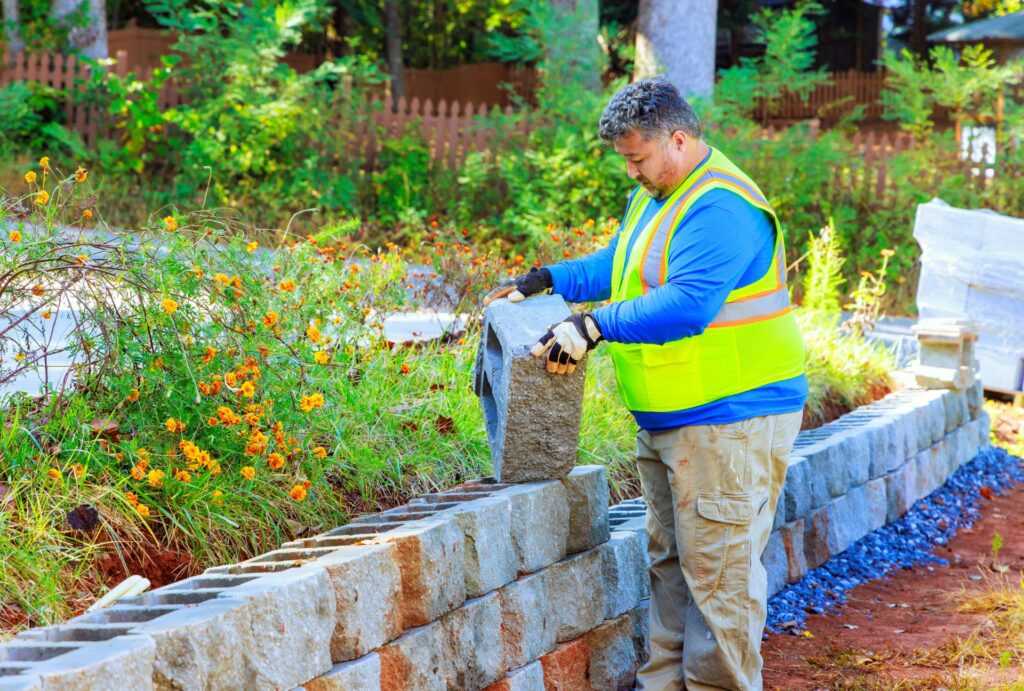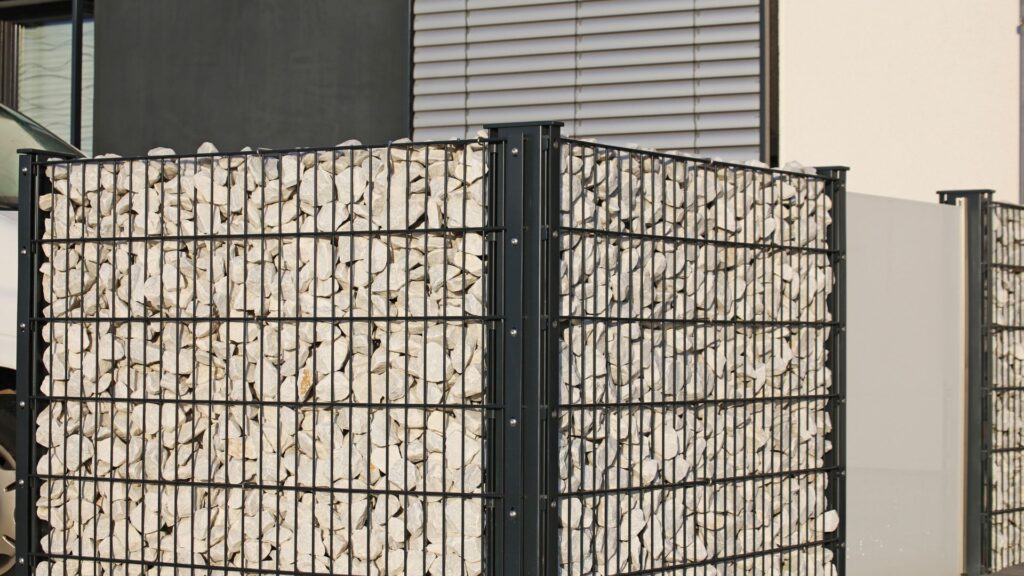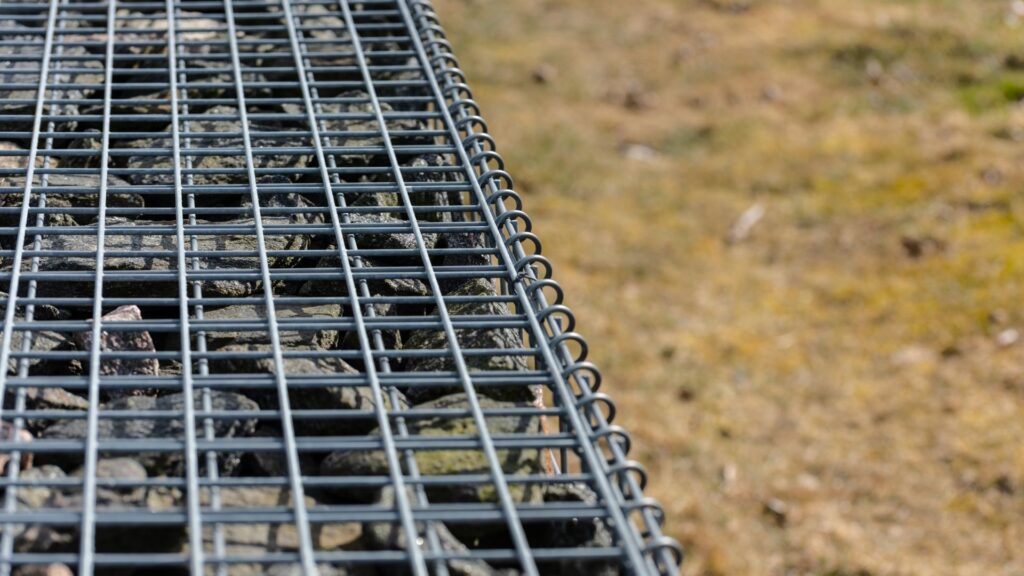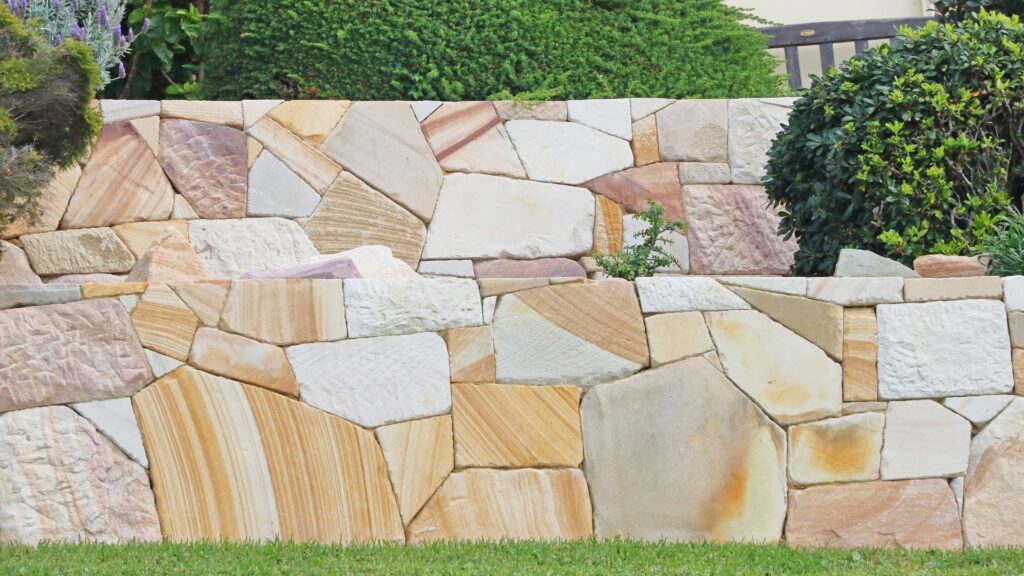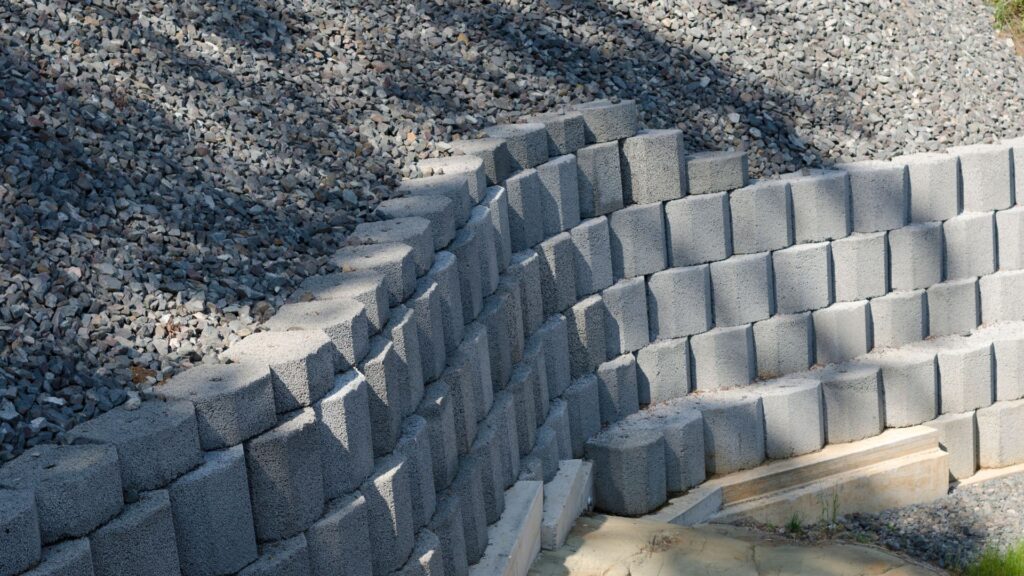Welcome to the ultimate guide on retaining walls in NZ! Whether you’re dealing with sloping terrain, looking to enhance your garden’s aesthetic appeal, or simply aiming to prevent soil erosion, retaining walls offer a versatile solution tailored to New Zealand’s unique landscape. In this comprehensive post, we’ll explore various types of retaining walls, delve into their numerous benefits, and even provide you with DIY tips to tackle your own project. Read on to discover everything you need to know about making the most out of retaining walls in your outdoor spaces.
A retaining wall in NZ is a structure designed to hold back soil and prevent erosion on sloped properties. Common types include gravity, cantilever, sheet piling, anchored, gabion, and segmental walls, each offering unique benefits such as enhanced property aesthetics, increased usable space, and environmental advantages. Proper planning, material selection, and maintenance are crucial for building durable retaining walls that complement New Zealand’s diverse landscapes.
Understanding Retaining Walls
What are Retaining Walls?
Retaining walls are structures designed to hold back soil or rock from a building, structure, or area. They play a crucial role in preventing erosion and managing water runoff. By stabilizing sloped landscapes, they create flat areas for gardens, patios, or pathways. Think of them as large barriers that stop the earth from sliding downhill, ensuring that your property remains both functional and visually appealing.
These walls can be made from a variety of materials including concrete, stone, wood, and even plastic. Each material has its unique advantages and can be chosen based on the specific needs of the landscape and aesthetic preferences.
The History and Popularity of Retaining Walls in New Zealand
Retaining walls have been around for centuries, with their origins tracing back to ancient civilizations. The Romans, for instance, were masters of engineering and utilized retaining walls to construct their iconic roads and aqueducts. Over time, the design and materials of retaining walls have evolved, but their fundamental purpose remains the same.
In New Zealand, retaining walls have become particularly popular due to the country’s unique terrain and climate. New Zealand’s landscape is characterized by rolling hills, steep slopes, and a diverse range of soil types. These conditions often necessitate the use of retaining walls to create stable and usable land for construction and agriculture.
The climate also plays a significant role in the popularity of retaining walls. New Zealand experiences heavy rainfall, which can lead to soil erosion and landslides. Retaining walls help manage water flow and prevent these issues, making them an essential feature in many New Zealand gardens and properties.
Moreover, the aesthetic appeal of retaining walls cannot be overlooked. They provide a way to transform challenging landscapes into beautiful and functional spaces. Homeowners and landscapers in New Zealand appreciate the versatility of retaining walls in creating terraces, raised garden beds, and stylish outdoor living areas.
In summary, retaining walls are a vital element in both historical and modern landscapes. In New Zealand, their importance is amplified by the local terrain and climate, making them a popular choice for enhancing property functionality and beauty. Whether you’re looking to prevent soil erosion, manage water runoff, or simply add a touch of elegance to your garden, retaining walls offer a practical and attractive solution.
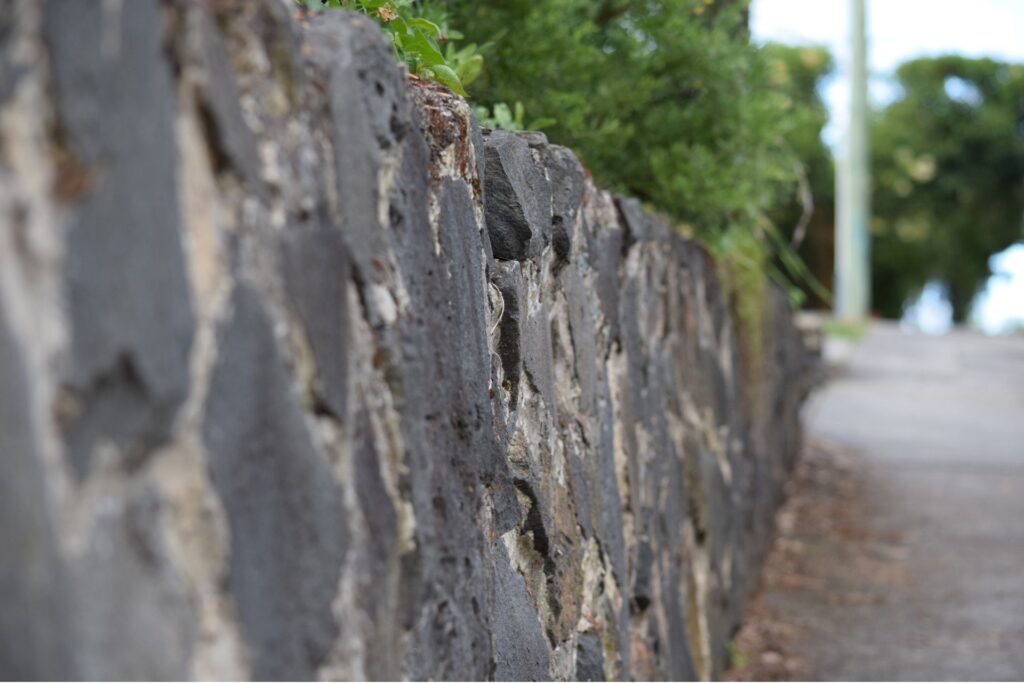
Types Of Retaining Walls In NZ
New Zealand’s diverse landscapes and varying soil conditions demand robust and reliable retaining wall solutions. Whether for residential, commercial, or infrastructure projects, understanding the different types of retaining walls can help you make an informed decision. Here, we delve into six common types of retaining walls used in New Zealand, discussing their characteristics, ideal materials, and typical applications.
1. Gravity Retaining Walls
Gravity retaining walls rely on their massive weight to hold back soil. These walls are typically constructed using heavy materials like stone or concrete. The design is straightforward: the sheer mass of the wall resists the pressure from the earth behind it. In New Zealand, stone and concrete are preferred materials due to their durability and availability. These walls are ideal for smaller-scale projects where the height of the wall is relatively low. The simplicity of gravity retaining walls makes them a popular choice for garden landscaping and minor slope stabilization.
2. Cantilever Retaining Walls
Cantilever retaining walls are engineered to leverage the strength of their structure to resist soil pressure. They consist of a thin stem and a base slab, with the weight of the backfill above the heel of the base slab helping to stabilize the wall. This type of retaining wall is commonly used in residential and commercial properties across New Zealand. Cantilever walls are particularly useful for medium to high-height applications, where a stronger solution is needed compared to gravity walls. They are often seen along roadsides, parking lots, and large garden terraces.
3. Sheet Piling Retaining Walls
In areas where space is limited, sheet piling retaining walls provide an effective solution. These walls are made from steel, vinyl, or wood planks driven into the ground to create a continuous barrier. The design allows for quick and efficient installation, making them suitable for urban environments and waterfront applications. In New Zealand, sheet piling is often used in construction sites where the excavation area needs to be supported temporarily. Their compact design and minimal footprint make them ideal for projects in densely populated areas or where access is restricted.
4. Anchored Retaining Walls
For projects requiring high load-bearing capacity, anchored retaining walls are an excellent choice. These walls use cables or rods anchored into the rock or soil behind the wall to provide additional stability. The anchors are typically tensioned to exert a force against the wall, counteracting the pressure from the retained soil. In New Zealand, anchored retaining walls are commonly used in situations where the soil is unstable, such as on steep slopes or in areas prone to landslides. They are also used in the construction of large retaining structures for infrastructure projects like bridges and tunnels.
5. Gabion Retaining Walls
Gabion retaining walls are constructed using wire mesh baskets filled with stones or rocks. This type of retaining wall offers both structural and aesthetic benefits. The permeability of gabions allows for excellent drainage, reducing hydrostatic pressure behind the wall. In New Zealand, gabion walls are appreciated for their environmental friendliness, as they can use locally sourced stones and blend naturally with the landscape. They are commonly used in erosion control, riverbank stabilization, and decorative landscaping projects. The natural appearance of gabion walls makes them a favorite in eco-friendly and sustainable construction.
6. Segmental Retaining Walls
Segmental retaining walls feature a modular design, using interlocking blocks that are easy to install without the need for mortar. This design provides flexibility and ease of installation, making them popular for DIY projects and professional landscaping alike. In New Zealand, segmental retaining walls are often used in residential gardens, terraces, and pathways. The versatility of these walls allows for creative designs, and the wide range of available block styles and colors adds to their appeal. Their ease of construction and aesthetic versatility make them a top choice for both small and large landscaping projects.
Each type of retaining wall offers unique benefits and is suited to specific applications. By understanding these options, you can choose the best solution for your project, ensuring stability and longevity while complementing the natural beauty of New Zealand’s landscapes.
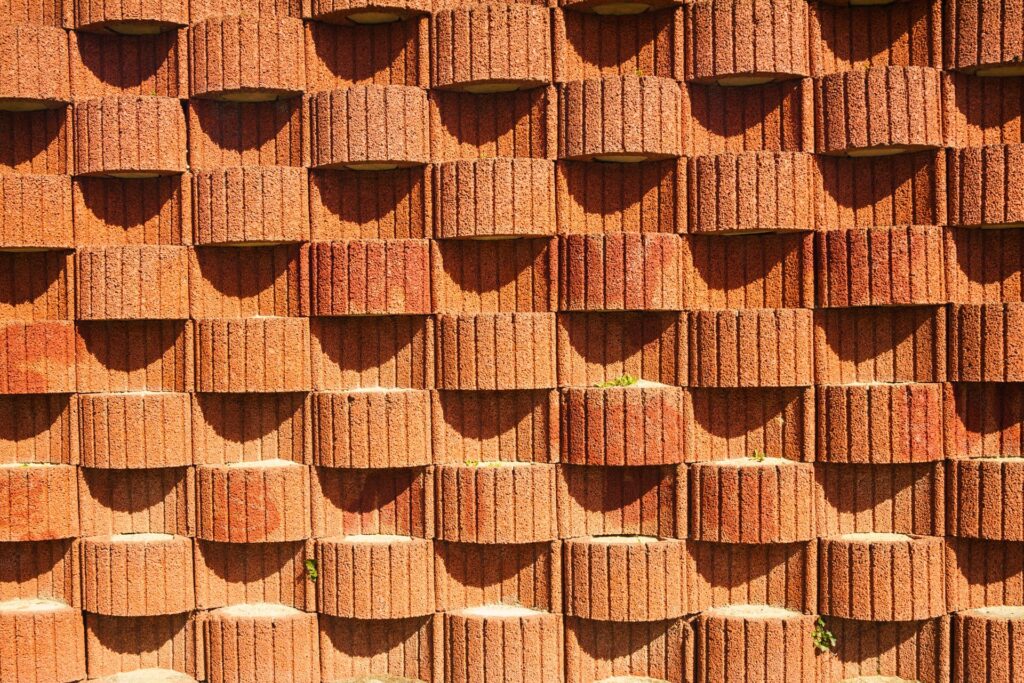
Benefits Of Retaining Walls
Erosion Control
Retaining walls play a crucial role in preventing soil erosion, a common issue in New Zealand’s diverse landscape. Given the country’s varied topography, from rolling hills to coastal cliffs, soil erosion can pose significant challenges to property owners. Retaining walls act as a barrier that holds soil in place, preventing it from washing away during heavy rains or strong winds. For instance, in areas like the hilly suburbs of Wellington or the undulating terrain of Waikato, retaining walls provide essential support, stabilizing the ground and safeguarding properties from the detrimental effects of erosion. By securing the soil, these structures help maintain the integrity of the landscape, ensuring that gardens, lawns, and natural habitats remain intact and vibrant.
Aesthetic Appeal
Beyond their functional benefits, retaining walls significantly enhance the aesthetic appeal of a property. These structures can be designed to complement the natural surroundings and architectural style of a home. For example, a beautifully crafted stone retaining wall can add a touch of rustic charm to a rural property, while sleek, modern concrete walls can provide a contemporary edge to urban homes. Integrating retaining walls with landscaping elements such as tiered gardens, flower beds, or even water features can transform a mundane slope into a visually striking focal point. In areas like Auckland’s North Shore, where properties often feature varying elevations, well-designed retaining walls can create stunning outdoor spaces that blend seamlessly with the natural environment.
Increased Property Value
Investing in well-designed retaining walls can significantly boost the value of a property. Real estate experts in New Zealand frequently highlight the added appeal of professionally built retaining walls in property listings. For instance, John Smith, a renowned real estate agent in Auckland, notes, “Properties with well-constructed retaining walls not only offer better land use but also present a more polished and well-maintained appearance, which is highly attractive to potential buyers.” The enhanced functionality and improved aesthetics that retaining walls provide can make a property stand out in a competitive market, potentially leading to higher offers and quicker sales.
Space Optimization
Retaining walls are particularly beneficial for optimizing space on sloped properties, which are common in many parts of New Zealand. These structures enable homeowners to create flat, usable areas out of otherwise challenging terrains. For example, in regions like the hillside neighborhoods of Dunedin, retaining walls can transform a steep, unusable slope into a terraced garden, a patio, or even additional parking space. By maximizing the usable land, retaining walls help homeowners make the most of their properties, enhancing both functionality and enjoyment of the outdoor areas.
Environmental Benefits
Retaining walls offers several environmental benefits, contributing to better land management and sustainability. One of the key advantages is improved drainage. By directing water flow and reducing surface runoff, retaining walls help prevent waterlogging and erosion, promoting healthier soil and plant growth. This is especially important in areas prone to heavy rainfall, such as the West Coast of New Zealand. Additionally, by preventing soil erosion and managing water flow, retaining walls help protect local waterways from sedimentation and pollution. This contributes to a healthier ecosystem, supporting biodiversity and maintaining the natural beauty of the landscape.
In conclusion, retaining walls are a valuable addition to any property, offering numerous benefits that extend beyond their primary function of soil stabilization. From enhancing aesthetic appeal and increasing property value to optimizing space and providing environmental advantages, these structures are an investment in both the beauty and functionality of the land.
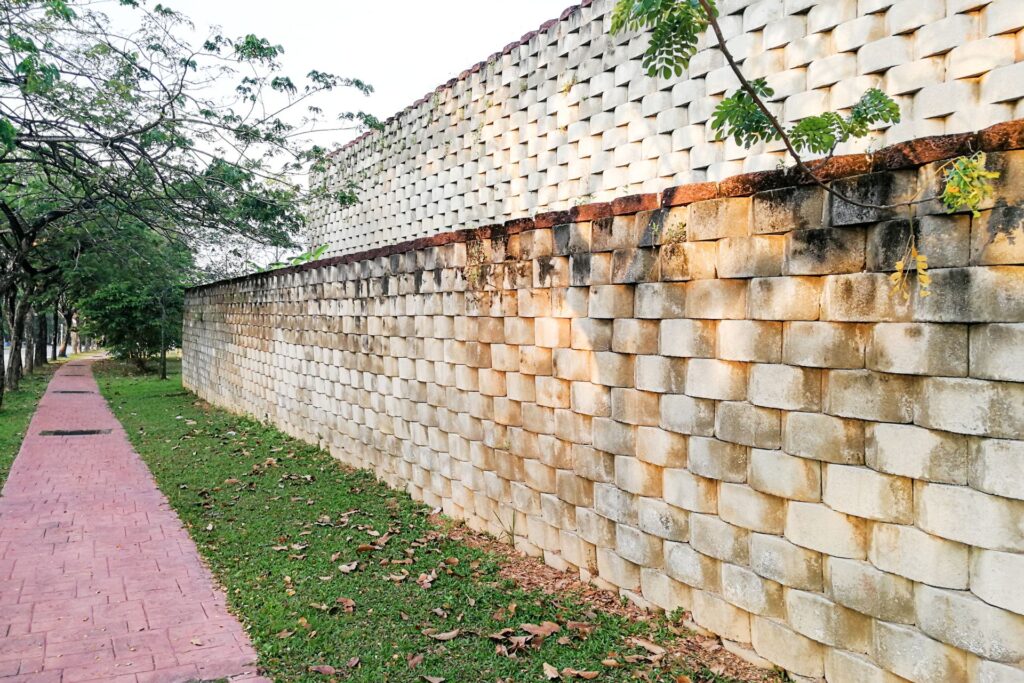
DIY Retaining Walls: A Step-By-Step Guide
Planning Your Project
Proper planning is the cornerstone of a successful DIY retaining wall project. Before you break ground, take the time to thoroughly assess your site. Consider the slope, soil type, and drainage needs. This will help you determine the best type of retaining wall for your property. For example, a timber wall might be suitable for a garden bed, while a stone or concrete wall may be better for holding back larger amounts of soil. Ensure you also check for any local council regulations or required permits before starting your project.
Materials and Tools
Having the right materials and tools is crucial for building a sturdy retaining wall. Here’s a list of essential items you’ll need:
Materials: Retaining wall blocks or timber, gravel, sand, concrete, drainage pipes, and geotextile fabric.
Tools: Shovel, wheelbarrow, level, measuring tape, hammer, chisel, gloves, safety glasses.
For sourcing these materials in New Zealand, consider visiting local suppliers such as Bunnings Warehouse, Mitre 10, or PlaceMakers. They offer a wide range of quality materials and tools suitable for DIY projects.
Construction Steps
1. Site Preparation: Start by clearing the area of any debris and vegetation. Mark out the boundaries of your wall using stakes and string. Ensure the ground is level and compacted.
2. Foundation: Excavate a trench for the foundation of your wall. The depth should be about one-third of the height of your wall. Fill the trench with gravel and compact it to create a stable base.
3. Laying the First Course: Place the first layer of retaining wall blocks or timber in the trench. Use a level to ensure each piece is perfectly aligned and even. This layer is the most critical for the stability of your wall.
4. Building Up: Continue adding layers, ensuring each one is level and staggered for strength. Backfill with gravel as you go to promote drainage.
5. Drainage: Lay drainage pipes at the base of the wall and cover them with gravel. This will help prevent water buildup behind the wall, which can cause structural damage.
6. Finishing Touches: Once the wall reaches your desired height, cap it off with the final layer. Fill any gaps with soil and plant grass or other vegetation to enhance the appearance.
Maintenance Tips
Maintaining your retaining wall is essential to ensure its longevity. Regularly inspect your wall for any signs of wear or damage. Addressing minor issues early can prevent major problems down the line. Here are some maintenance tips specific to New Zealand’s climate:
Seasonal Checks: After heavy rains, check for any signs of erosion or water damage. Ensure the drainage system is functioning correctly to prevent water buildup.
Vegetation Control: Keep the area around your wall free of overgrown vegetation. Roots can penetrate and weaken the structure.
Cleaning: Remove dirt and debris from the wall’s surface periodically to keep it looking its best.
By following these steps and tips, you can build a strong and durable retaining wall that enhances your property’s landscape.
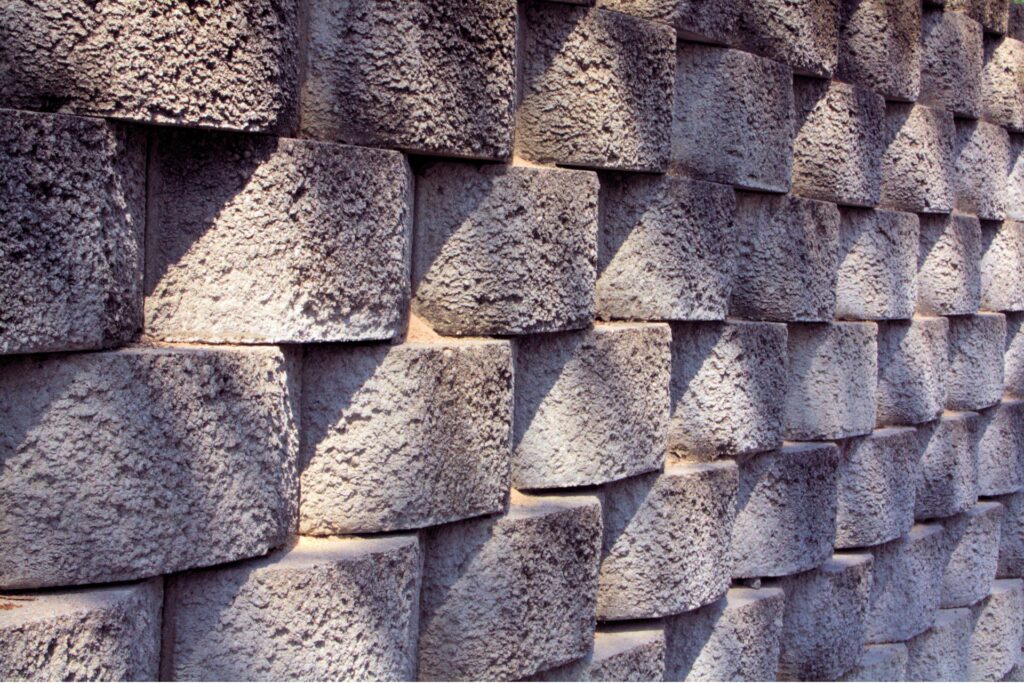
When To Hire A Professional
When it comes to building or repairing a retaining wall, the decision to hire a professional can make a significant difference in the project’s outcome. Let’s delve into the reasons and scenarios when it’s best to bring in the experts, how to choose the right contractor, and what cost considerations you should keep in mind.
Complex Projects
Scenarios Where Professional Expertise is Recommended
Retaining wall projects can vary greatly in complexity. If you’re dealing with a straightforward garden border, you might handle it yourself. However, there are specific situations where professional expertise is indispensable:
Steep Slopes and Erosion Control: If your property is on a steep slope or prone to erosion, constructing a retaining wall is not a simple task. Professionals can design walls that effectively manage these challenges.
Large-Scale Projects: Larger projects, such as those involving multiple tiers or extensive lengths, require precise engineering to ensure stability and durability.
Structural Integrity: Retaining walls over a certain height often needs to comply with local building codes and regulations. Professionals are well-versed in these requirements and can ensure your wall is up to standard.
Drainage Solutions: Proper drainage is crucial to prevent water buildup behind the wall, which can lead to failure. Professionals have the expertise to integrate effective drainage solutions into the design.
Benefits of Hiring a Professional in NZ
In New Zealand, hiring a professional brings several benefits
Expertise and Experience: Professionals bring years of experience and specialized knowledge, ensuring that your retaining wall is built to last.
Quality Materials: They have access to high-quality materials and know which ones are best suited for your specific project.
Time and Efficiency: A professional team can complete the project more quickly and efficiently than a DIY approach, minimizing disruption to your property.
Compliance and Safety: Professionals are familiar with local building codes and safety regulations, ensuring that your project complies with all necessary standards.
Choosing the Right Contractor
Tips for Finding and Hiring a Reputable Contractor
Choosing the right contractor is crucial for a successful project. Here are some tips to guide you:
Research and Recommendations: Start by researching local contractors and asking for recommendations from friends, family, or neighbors who have had similar work done.
Check Credentials: Verify that the contractor is licensed and insured. This protects you from any liabilities during the project.
Read Reviews: Look for online reviews and testimonials. Pay attention to the feedback about the contractor’s reliability, quality of work, and professionalism.
Portfolio and References: Ask to see a portfolio of their previous work and request references. Speaking to past clients can give you insights into their experience with the contractor.
Questions to Ask and What to Look for in Their Portfolio
When evaluating potential contractors, consider asking the following questions:
Experience: How long have they been in business? Do they have experience with projects similar to yours?
Timeline: What is the estimated timeline for completion? How do they handle potential delays?
Cost Estimates: Can they provide a detailed written estimate? What is included, and are there any potential additional costs?
Warranty: Do they offer a warranty on their work? What does it cover?
In their portfolio, look for:
Diversity of Projects: A range of projects showcasing their versatility and expertise.
Attention to Detail: High-quality finishes and attention to detail in their work.
Client Satisfaction: Evidence of satisfied clients and successful project outcomes.
Cost Considerations
Overview of Typical Costs Associated with Professional Retaining Wall Installation in NZ
The cost of professional retaining wall installation can vary based on several factors, including the wall’s size, materials used, and site conditions. On average, you might expect to pay:
Materials: The cost of materials (such as concrete, stone, or timber) will significantly impact the overall price.
Labor: Professional labor costs can vary depending on the complexity of the project and the contractor’s experience.
Design and Engineering: For larger or more complex projects, you might need to factor in the costs of design and engineering services.
Budgeting Tips and Potential Savings
To manage your budget effectively, consider these tips
Get Multiple Quotes: Obtain quotes from several contractors to compare prices and services.
Plan Ahead: Proper planning can help avoid unexpected costs and delays.
Choose Materials Wisely: Opt for materials that offer the best balance of cost, durability, and aesthetics.
Negotiate: Don’t hesitate to negotiate terms and prices with your contractor.
By taking these steps, you can ensure that you hire the right professional for your retaining wall project, keeping costs manageable while achieving a high-quality, durable outcome.
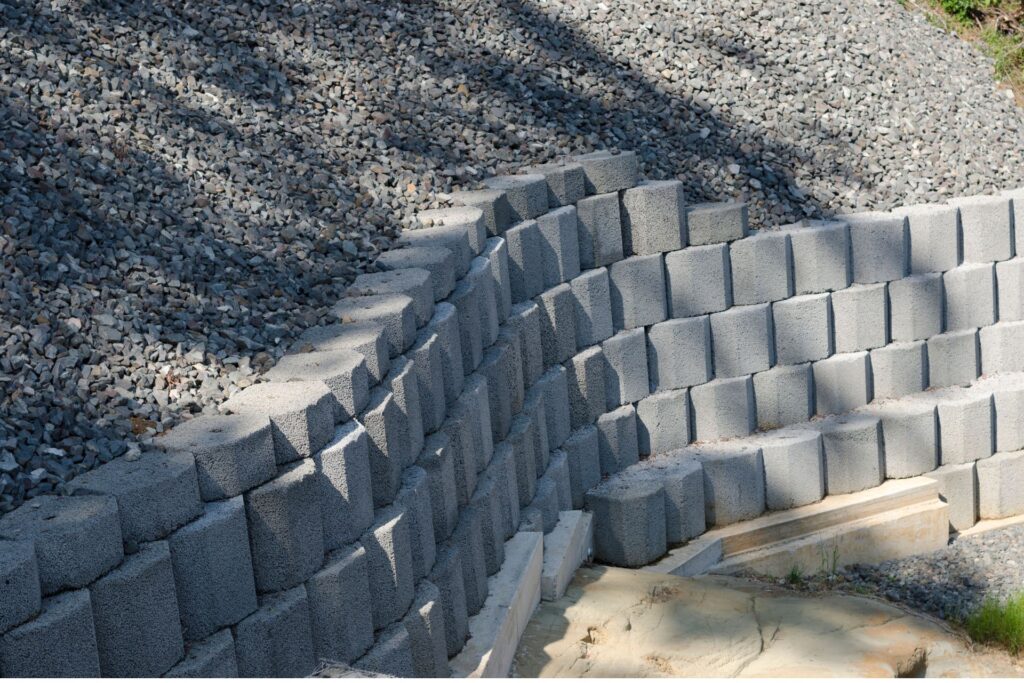
FAQs: About Retaining Walls NZ
Conclusion
In conclusion, we’ve explored the essential steps for building a retaining wall, highlighting key considerations such as planning, materials selection, and construction techniques. If you’re ready to transform your landscape with a sturdy and attractive retaining wall, now is the perfect time to start your project or seek advice from a professional. We invite you to share your own experiences and questions in the comments section below and don’t forget to follow us on social media for more expert landscaping tips and inspiration. Let’s create beautiful and functional outdoor spaces together!
Find A Professional Retaining Wall Builder Near You!
- Retaining Wall Builders Hastings
- Retaining Wall Builders Hawkes Bay
- Retaining Wall Builders Kapiti
- Retaining Wall Builders Levin
- Retaining Wall Builders Lower Hutt
- Retaining Wall Builders Manawatu
- Retaining Wall Builders Napier
- Retaining Wall Builders Palmerston North
- Retaining Wall Builders Porirua
- Retaining Wall Builders Upper Hutt
- Retaining Wall Builders Wellington
- Retaining Wall Installation Manawatu
- Retaining Walls Nelson
- Retaining Walls Tauranga
- Gabion and Timber Retaining Walls Kapiti
- Retaining Wall Builders Auckland
- Retaining Wall Builders Hamilton
- Retaining Wall Builders Tauranga
- Retaining Walls Christchurch
- Retaining Walls Kerikeri
- Retaining Walls Mangawhai
- Retaining Walls Paihia
- Retaining Walls Rotorua
- Retaining Walls Warkworth
About the Author:
Mike Veail is a recognized digital marketing expert with over 6 years of experience in helping tradespeople and small businesses thrive online. A former quantity surveyor, Mike combines deep industry knowledge with hands-on expertise in SEO and Google Ads. His marketing strategies are tailored to the specific needs of the trades sector, helping businesses increase visibility and generate more leads through proven, ethical methods.
Mike has successfully partnered with numerous companies, establishing a track record of delivering measurable results. His work has been featured across various platforms that showcase his expertise in lead generation and online marketing for the trades sector.
Learn more about Mike's experience and services at https://theleadguy.online or follow him on social media:

